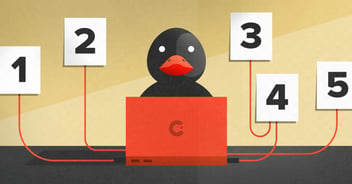We, humans, are pushing the health of our planet beyond its critical limits. We have littered our oceans with plastic; a material heralded as a miracle since the 1940s. In developing countries, explosive population growth coupled with rapid economic development is upsurging energy needs, which are met by burning fossil fuels. In well-off western countries, consumers desiring luxury lifestyles are purchasing more and more environmentally costly services, nondurable goods and power-hogging personal devices. Businesses are happy to produce them with relatively little consideration given to matters of sustainability and responsibility in favour of higher profit margins.
Over the long term, trends like these foreshadow a catastrophic change to our climate and ultimately, to ourselves. But how did we end up in this situation without any foresight? As designers, developers, entrepreneurs and business professionals, haven't we always been in a pivotal role to make decisions about how exploitative the products and services we create are to our planet?
Don't trust the process blindly
Most modern businesses use some form of design thinking -inspired process to drive product and service innovation. The process suggests that the sweet spot for creating winning products and services is at the junction between desirability for end-users, viability for business, and technological feasibility. For decades, striking the right balance between these three factors has proven to be a winning recipe when combined with a bit of luck, good timing and creative marketing.
Even today, this mindset stemming from the union between desirability, viability and feasibility is leading the operations in most companies. Creating products and services that are on an environmentally sustainable base is still a secondary concern. The money that could well be spent on operating with ecologically sound practices is channelled into marketing "of being green" – commonly known as greenwashing.
Whenever businesses attempt to go beyond greenwashing to do real good, these actions often lack one critical element: transparency. Transparency of activities and their consequences. In holiday advertising, climate compensation for air travel is all the rage. As a consumer, can you clearly track where the money you pay to offset your carbon emissions is going? Is it used to fund initiatives that plant forests to combat emissions or something else? Is the company you fly with directing the funds to the initiative with the most measured and verified impact? How big of a percentage of your carbon offset compensation is burnt on organisational expenses? Do the initiatives operate in a sustainable, transparent, and responsible manner too?
One battle that you need to win
Public awareness, direct action, shifts in consumer behaviour and legislative changes are quickly turning sustainability into a must-win strategic battle for any business that wants to be relevant in the future. Environmental laws are rapidly changing around the world. Within the EU, the current goal is to reduce greenhouse gasses by 40% compared to 1990 levels within the next 11 years. Finland has pledged to be carbon neutral by 2035. Among consumers, millennials and Gen Z'ers are increasingly making purchase decision based on factors such as authentic support for a cause, transparency and responsibility.
How could a business navigate and flourish in this complex network of synchronous changes that are revolutionizing their competitive landscape? Clearly, businesses need a radical shift in their mindset to build competitive products and services that align well with market demand in the future. Up to recent times, many of them have operated by looking no further than legislative restrictions and their immediate competitive landscape as their sphere of reference.
A wider lens
We believe that in a highly complex world where problems are systemic by nature, only a systemic design approach can yield products and services that are financially viable and contribute positively to the state of our planet. This approach needs to be driven by a framework of sustainability, transparency and responsibility – the very same values that resonate positively with consumers and make it less painful for businesses to comply with legislative changes. While the value delivered by a traditional design thinking -inspired approach is still alive at the core, the work of solving complex environmental and social issues needs to start by examining the larger context first.
Our time is running out
For the first time in the history of modern business, we're facing a mass extinction threat not only to our businesses but to humanity itself. Climate change and the impending environmental crisis can't be solved by one industry, country, city or a company alone. We need radical collaboration, openness, responsibility and systemic thinking to bring about a positive future.
Ask yourself: What kind of a contribution do you want your company to have on the world that your children will inherit?
Want to learn more? Read more about Planet Centric design and download your free toolkit here.



